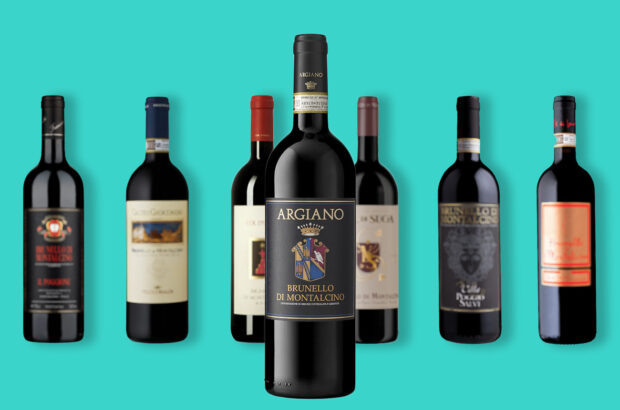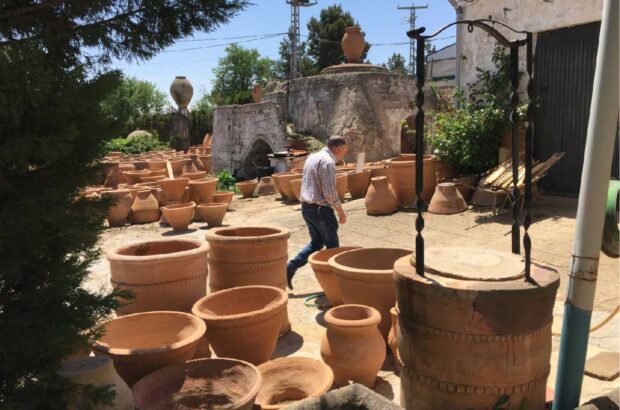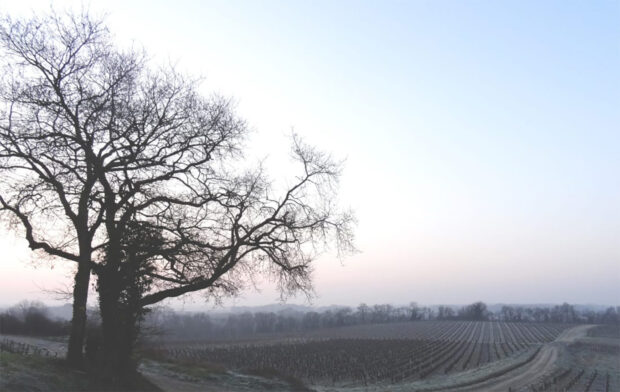Traditionally one of the poorest areas in Europe, the south of Portugal is now one of the richest in local colour. John Downes MW heads down to the Alentejo to investigate the region’s change of fortunes
Isabella the Patron
Jealous husbands were also around way back in the 13th century and old King Denis was a lucky man to have captured the adorable Isabella. He didn’t let her out of his sight. To make things worse for the popular queen, her husband lived in luxury but let the Alentejans suffer in poverty. So, while the king snored, she escaped and under cover of darkness, went to the city gates to distribute bread and wine to the townsfolk, but one night he awoke and followed her. The old king confronted her and demanded to know what was in her basket. ‘Why roses of course,’ she answered sweetly. ‘Show me,’ he screamed as he removed the cover. To her amazement, roses fell to the ground. It was this miracle that elevated Isabella to sainthood.
Today’s winemakers in the Alentejo should take Isabella as their patron because their wines are consistently coming up roses thanks to growing investment and confidence in this region of southern Portugal.
Europe’s most exciting wine regions
This baking sector of the Iberian peninsula extends from the Atlantic Ocean to the Spanish border and incredibly stretches for about third of Portugal’s length. The clay-based vineyards cover about 14,000 hectares but do not dominate the parched landscape. As a reflection of its ‘big volume’ past, six cooperatives account for about 85% of the region’s production, but it is the 40 plus individual producers who are pushing out the quality frontiers through investment. The cooperatives are now following suit. The result is one of Europe’s most exciting wine regions.
The list of investments reads like a series of headlines from the Financial Times: ‘Esporão invest multi millions into winery and vineyards at Reguengos’; ‘Coop at Reguengos de Monsaraz build new winery for DOC wines’; ‘New winery for Sogrape at Herdade de Peso’; ‘Quinta do Carmo forms partnership with Bordeaux’. It is the Bordeaux link that has convinced many onlookers of the potential of this hither-to unknown region. In 1992 Domaines Barons de Rothschild (of Château Lafite fame) came, saw and invested in a 50:50 partnership with Carmo. ‘They knew that together we could make world class wines here,’ notes winemaker, Joachin Roque.
Sticking to their guns
How easy it would have been for the Alentejans to link this vast investment with the global trend of planting the all-singing, all-dancing varieties, but thankfully they’ve stuck to their guns and grapes and rejected Cabernet and Chardonnay. Their confidence in the region’s climate, microclimates and soils has been extended to a solid backing for the region’s indigenous varieties. Believe it or not, even Bordeaux-backed Quinta do Carmo boasts a typical blend of Aragonez (40%), Alicante Bouschet (30%), Trincadeira (15%) and Periquita (15%). For those of you ‘turned on’ by varieties, the Aragonez is our old friend Tempranillo. Not surprisingly, Aussie winemaker David Baverstock at Esporão has more of a New World approach. ‘I’m experimenting with Shiraz as it gives both colour and acidity,’ he says. But, that said, he is totally convinced by the local varietals. Baverstock goes one step further in his support for Verdelho.
‘It’s actually a Portuguese variety but there’s more in Oz, which is a pity as it has great potential here,’ he explains. Pioneer winemaker, Juan Portugal Ramos started with the Vidigueira Cooperative in the south of the region way back in 1981 and now consults to 15 wineries, as well as running his own at Moria do Serrada Pimmero. Ramos has witnessed all the changes but sees more in the air. ‘I never thought that I’d need varietal wines, but now I do to cater for market demands. I have Trincadeira, Aragonez and Antão Vaz but I’m experimenting all the time,’ he adds. Baverstock agrees – nearly: ‘Everybody’s doing varietals but I still think that, in the Alentejo, blends are best. Keep your eyes open for the Trincadeira, Aragonez, Shiraz, Touriga Nacional blend, that’s one for the future,’ he notes. The Douro star, Touriga Nacional is becoming more popular and the future holds more of the same as it has that Cabernet Sauvignon quality of effortlessly ‘lifting’ a blend from a small input.
White wines
Red grapes dominate 80% of Alentejo vineyard space but, although totally overshadowed, such white varieties as Roupeiro, Fernão Pires, Perrum and Arinto can surprise. I often call Arinto ‘Sauvinto’ as its gooseberry aromas remind me of the Loire classic. ‘It also responds well to oak,’ adds Sogrape consultant, Vasco Magalhaes. Ramos’ Antão Vaz is one-third barrel fermented in new oak with no malolactic, demonstrating an underlying desire to experiment to produce ever better whites.
The average yields in the Alentejo are amazingly low at about 40 hectolitres per hectare, but in 1998 they were down even lower, to a meagre 20hl/ha. ‘It was a very small harvest but the quality was up,’ notes Colaco do Rosareo, the winemaker at Cartuxa, makers of the world-famous, densely coloured, spicy black fruit beauty, Pera Manca. ‘Why, we may even have a batch good enough for a Pera Manca from 1998,’ he grins, reflecting that the wine was only made in 1991, 1994 and 1995.
Under the hot southern sun irrigation is allowed and at Esporão the black drip-feed pipes are draped between the low, guyot-trained vines to obtain consistency of fruit. At Quinta do Carmo, in the name or terroir complexity, they do not irrigate.
Wineries and vineyards
The wineries, too, are bulging with the benefits of investment: glistening stainless steel and pneumatic presses. In line with the overall philosophy of the Alentejo, the winemakers are not simply jumping on the global ‘designer wine’ bandwagon. At Esporão they have recently bought two Vinimatic automatic fermenters but are again using old-fashioned lagares for better pressing results. At Cartuxa it’s the same story. ‘We never follow modern trends just for the sake of it,’ confirms Rosareo, ‘we still blend from large and small oak barrels and concrete to ensure that the oak doesn’t dominate the fruit.’ In the vineyards it is a slighty different story as the lack and cost of labour is forcing many wineries into technology. Quinta do Carmo is experimenting with mechanical harvesting and Esporão have put in higher trellising to facilitate the narrow machines.
Back in 1992, the boring old statistics showed that only 35,000 litres were exported, but a 70-fold increase by 1996 would put a smile on even the dullest accountant’s face. Today’s expanding figures show that Germany, the United States, France and the UK, amongst many others, just can’t get enough. But figures can be misleading, especially if the bottle price is only a low profit yielding £2.99. Thankfully, in the Alentejo that is not the case. Cheaper wines are available but the discerning consumer is happily paying over £6 and the top wines, those selling at over £10, are pleasing many. So, if the winemakers of the Alentejo haven’t already voted in Saint Isabella as their patron, it’s about time they did. She’s obviously adopted them and is throwing more and more roses across the stage of one of the world’s brightest newcomers.












